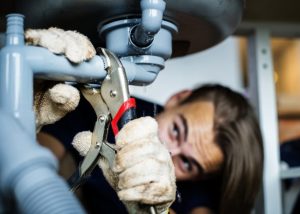How to Find and Repair Work Water Leaks-- A Comprehensive Guide
How to Find and Repair Work Water Leaks-- A Comprehensive Guide
Blog Article
Right here below you will find a bunch of superb content related to Leaking water lines.

Early detection of dripping water lines can reduce a prospective catastrophe. Some tiny water leaks might not be visible.
1. Analyze the Water Meter
Examining it is a proven way that helps you uncover leaks. If it moves, that suggests a fast-moving leak. This implies you may have a slow-moving leakage that can also be below ground.
2. Check Water Intake
Assess your water bills and also track your water consumption. As the one paying it, you should observe if there are any discrepancies. If you identify sudden changes, in spite of your usage being the same, it means that you have leaks in your plumbing system. Keep in mind, your water expense must fall under the same array each month. A sudden spike in your expense suggests a fast-moving leak.
A consistent rise every month, even with the exact same habits, shows you have a sluggish leak that's additionally slowly intensifying. Call a plumber to thoroughly inspect your property, specifically if you feel a warm area on your flooring with piping underneath.
3. Do a Food Coloring Examination
30% comes from bathrooms when it comes to water intake. Examination to see if they are running correctly. Drop specks of food color in the tank and also wait 10 minutes. If the shade in some way infiltrates your dish throughout that time without flushing, there's a leak in between the tank as well as dish.
4. Asses Outside Lines
Do not forget to examine your exterior water lines as well. Test faucets by connecting a garden pipe. Should water leak out of the connection, you have a loose rubber gasket. Replace this as well as make sure all links are limited. If you've got a lawn sprinkler, it will certainly help get it skillfully checked out and maintained every year. One little leak can waste lots of water and increase your water expense.
5. Assess the situation as well as evaluate
House owners must make it a behavior to inspect under the sink counters as well as even inside cupboards for any kind of bad odor or mold and mildew development. These two red flags indicate a leak so punctual interest is required. Doing regular examinations, also bi-annually, can conserve you from a significant issue.
If you recognize your house is already old, keep a watchful eye on your heaters, pipes, pipelines and so on. Check for stainings and damaging as most home appliances and pipes have a life span. They will additionally naturally weaken due to tear and wear. If you believe dripping water lines in your plumbing system, do not await it to rise. Call an expert plumber immediately so you don't wind up with an awful mess in your house.
Early detection of dripping water lines can reduce a potential catastrophe. Some tiny water leakages might not be visible. Checking it is a proven way that helps you find leaks. One little leakage can throw away lots of water as well as surge your water bill.
If you think leaking water lines in your plumbing system, don't wait for it to rise.
WARNING SIGNS OF WATER LEAKAGE BEHIND THE WALL
PERSISTENT MUSTY ODORS
As water slowly drips from a leaky pipe inside the wall, flooring and sheetrock stay damp and develop an odor similar to wet cardboard. It generates a musty smell that can help you find hidden leaks.
MOLD IN UNUSUAL AREAS
Mold usually grows in wet areas like kitchens, baths and laundry rooms. If you spot the stuff on walls or baseboards in other rooms of the house, it’s a good indicator of undetected water leaks.
STAINS THAT GROW
When mold thrives around a leaky pipe, it sometimes takes hold on the inside surface of the affected wall. A growing stain on otherwise clean sheetrock is often your sign of a hidden plumbing problem.
PEELING OR BUBBLING WALLPAPER / PAINT
This clue is easy to miss in rooms that don’t get much use. When you see wallpaper separating along seams or paint bubbling or flaking off the wall, blame sheetrock that stays wet because of an undetected leak.
BUCKLED CEILINGS AND STAINED FLOORS
If ceilings or floors in bathrooms, kitchens or laundry areas develop structural problems, don’t rule out constant damp inside the walls. Wet sheetrock can affect adjacent framing, flooring and ceilings.
https://www.servicemasterbyzaba.com/blog/how-to-detect-water-leakage-in-walls/

I'm just very fascinated with Top leak detection hacks and I'm hoping you liked our blog entry. Sharing is caring. You just don't know, you will be doing someone a favor. Thanks a bunch for your time. Come back soon.
Report this page